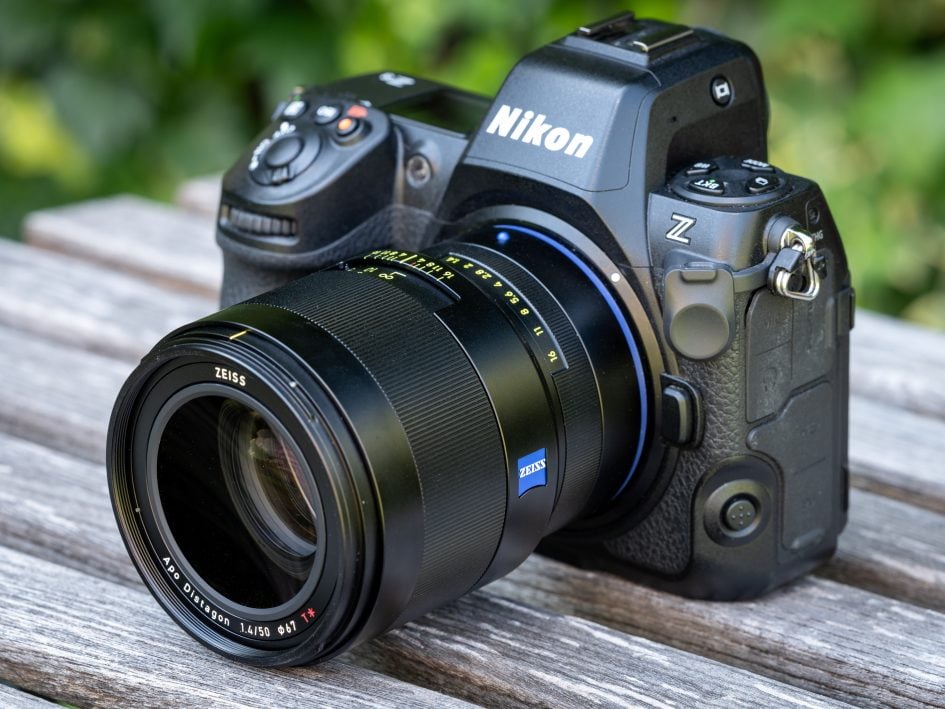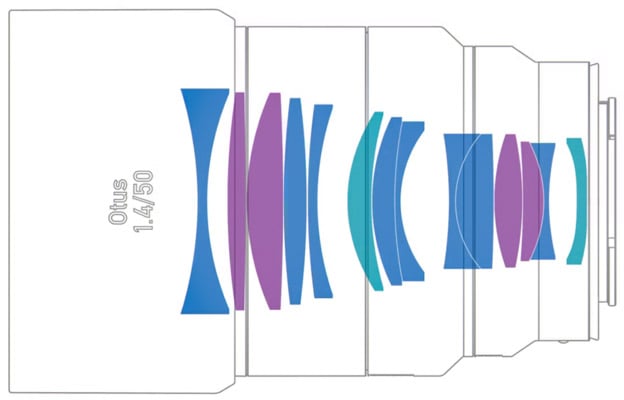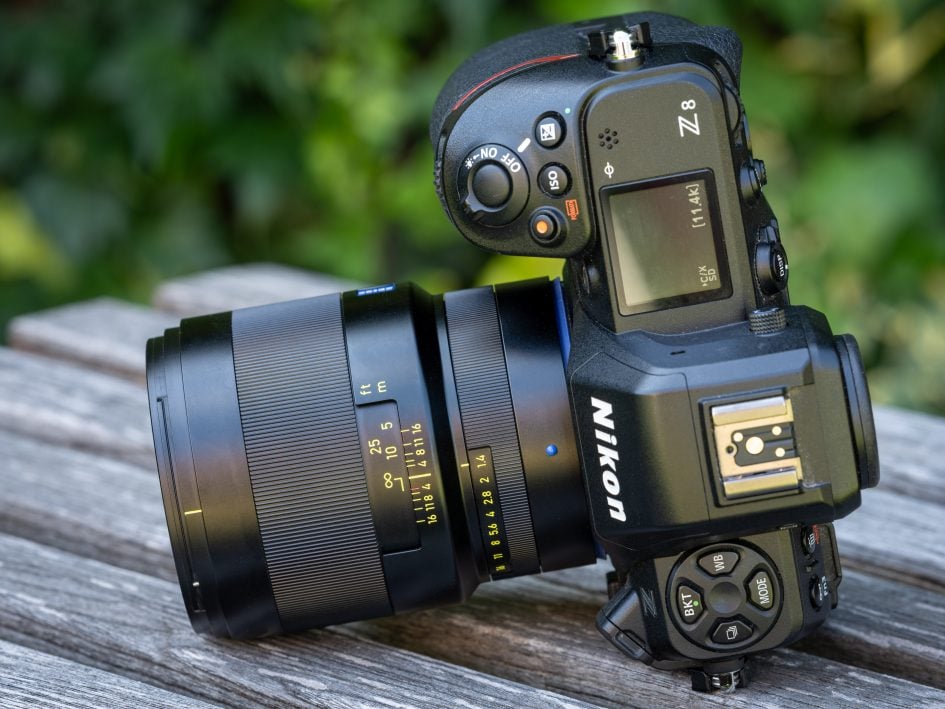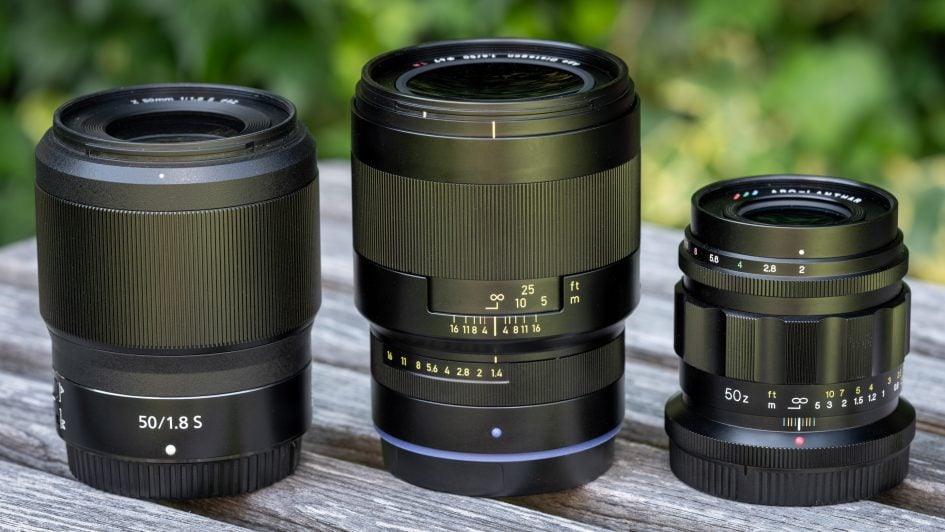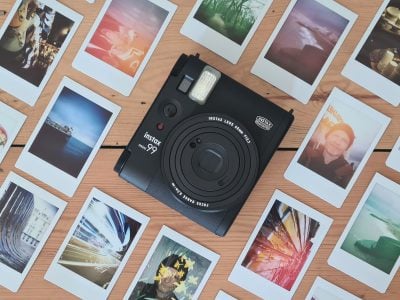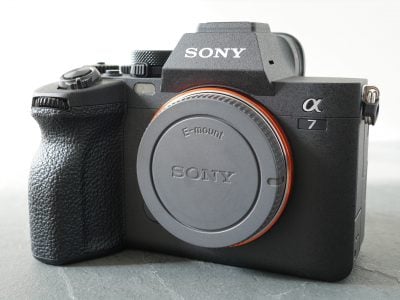Zeiss Otus ML 50mm f1.4 review
-
-
Written by Thomas
Intro
When Zeiss introduced their manual focus Otus 55mm f1.4 for Canon and Nikon DSLRs in 2013 this marked the beginning of a series of excellent optics far out-resolving yesteryear’s (and even today’s) sensors, while combining this with an iconic design and exceptional build quality. I had the pleasure to review them all: The Zeiss Otus 55mm f1.4, Zeiss Otus 85mm f1.4 (2014), Zeiss Otus 28mm f1.4 (2016), and Zeiss Otus 100mm f1.4 (2019). And they all got Highly Recommended although they were big, heavy, expensive, and manual focus only.
Zeiss focused more on Cine lenses for a while and shifted manufacturing of their Otus line to Cosina in Japan. But now they are back with two new Otus lenses designed for mirrorless cameras from Canon, Sony and Nikon: The Zeiss Otus ML 50mm f1.4 and Otus ML 85 f1.4. The new lenses inherit some of the iconic design, retain the full metal build, and stay manual focus only. But Zeiss managed to make them smaller and lighter, added full weather-sealing, a de-clickable aperture ring, and reduced the price over its DSLR predecessors. The Otus ML lenses have no optical image stabilization but instead rely on the in-body image stabilization of modern mirrorless cameras. And both new lenses are corrected for full-frame sensors.
In this review I’ll have a close look at the Zeiss Otus ML 50mm f1.4 which is a popular focal length for street photography and general-purpose use. On a cropped sensor body the new lens is equivalent in angle-of-view and depth-of-field to a 75mm f2.1 lens. This makes it quite attractive for portrait photography on the smaller format sensor with good background isolation and blur. To find out about the optical qualities I tested the lens on a Nikon Z8 using pixel shift shooting which quadruples the resolution of the camera to 180MP.
The Zeiss Otus ML 50mm f1.4 is made in Japan and costs 2259 EUR / 2499 USD / 2100 GBP.
Facts and features
Let’s compare the Zeiss Otus ML 50mm f1.4 to its predecessor the Zeiss Otus 55mm f1.4 for F-mount which can still be used via FTZ adapter on Nikon’s Z camera bodies, and the Nikon Z 50mm f1.4, Z 50mm f1.8 S, and Z 50mm f1.2 S (the links lead to my reviews of the respective lenses). I’ve also added data for the manual focus Voigtländer 50mm f2 APO-Lanthar from the Japanese manufacturer Cosina for good measure. As usual I’ve rated the features with a [+] (or [++]), when it’s better than average or even state of the art, a [0] if it’s standard or just average, and [-] if there’s a disadvantage. Size and weight is quoted for the Z-mount version of the Zeiss Otus ML 50mm f1.4, the E- and RF-mount versions are a bit shorter and lighter due to the 2mm resp. 4mm longer flange distance of the cameras. Btw.: If you’re interested in the alternatives for Sony E-mount or Canon RF-mount head over to Gordon’s reviews of the Sony FE 50mm f1.4 GM, Sony FE 50mm f1.2 GM, Canon RF 50mm f1.2L USM. A quick comparison of the Zeiss Otus ML 50mm f1.4 with the technical data of the Sony and Canon lenses can be found here.
Size (diameter x length): 77 x 102mm (3.0 x 4.0in.), the lens hood adds 34mm and is 85mm in diameter. The Zeiss Otus 55mm f1.4 is 92 x 117mm + 32mm lens hood, the FTZ adapter adds 30.5mm to its length. The Nikon Z 50mm f1.4 is 74 x 87mm + 48mm lens hood, the Z 50mm f1.8 S is 76 x 87mm + 44mm, the Z 50mm f1.2 S is 90 x 150mm + 60mm. The Voigtländer is only 68 x 64mm + 22mm lens hood. [0]
Weight: 718g (25.3 oz.) plus 72g for the metal lens hood which is much lighter than its predecessor: The Zeiss Otus 55mm f1.4 is 948g + 64g lens hood, the FTZ adapter adds 133g to its weight. The Nikon Z 50mm f1.4 is 418g + 30g lens hood, the Z 50mm f1.8 S is 412g + 27g, the Z 50mm f1.2 S is 1084g + 56g. The Voigtländer is only 387g + 19g. [0]
Optics: 14 elements in 11 groups including 4 special dispersion and 2 aspherical elements. The Zeiss Otus 55mm f1.4 has 12 lenses in 10 groups, the Nikon Z 50mm f1.4 is a 10/7 design, the Z 50mm f1.8 S is 12/9, the Z 50mm f1.2 S is 17/15, the Voigtländer is 10/8. [+]
Minimum object distance is 0.5m (1.64ft.) which results in a working distance of 39cm and a maximum magnification of 1:7.3 which is not much but comparable to the Otus 55mm f1.4. A magnification of 1:10 is achieved at 0.63m object distance. The Nikon Z 50mm f1.4 goes down to an MOD of 0.37m with a maximum magnification of 1:5.6, the Z 50mm f1.8 S goes to 0.38m and 1:6.0, the Z 50mm f1.2 S goes to 0.43m and 1:6.1, the Voigtländer to 0.45m and 1:6.4. [0]
Distance information is not relayed to the camera, so some of the advanced exposure-related calculations that Nikon bodies can do (e.g. while using a flash) do not work with this lens. [-]
Image stabilization: None of the lenses in this comparison have optical stabilization (VR). But Nikon’s full-frame Z bodies provide built-in sensor-shift stabilization over 5 axis for their own lenses (3 for the Zeiss lenses and Voigtländer) – plus an optional electronic stabilization in video mode. [0]
Filter-thread: 67mm. The Zeiss Otus 55mm f1.4 needs 67mm filters, the Nikon Z 50mm f1.4 and Z 50mm f1.8 S 62mm, the Z 50mm f1.2 S 82mm, the Voigtländer 52mm. [+]
Autofocus: No, just like the Zeiss Otus 55mm f1.4 and the Voigtländer. All three Z-Nikkors in this comparison offer autofocus with built-in focus drive but can be switches to manual focus if needed. [-]
Aperture ring: All MF lenses in this comparison have a dedicated aperture ring with click-stops at 1/3 intervals. On the Zeiss Otus ML 50mm f1.4 the aperture ring can be de-clicked but this requires the lens to be detached from the body and the use of a special tool to operate a switch on the lens mount. Pretty inconvenient! Sony and Sigma simply offer an external switch for de-clicking. Both the Nikon Z 50mm f1.2 S and Z 50mm f1.4 have a slim multi-function control ring which can be assigned to operate the aperture (which is the default), exposure compensation, or ISO sensitivity – or simply switched off. On the Z 50mm f1.8 S the broad control ring falls back to its customary focus control when the lens is switched to manual focus. The control ring on the Z-Nikkors does not offer click-stops. [+]
Lens profile: The Otus ML 50mm f1.4 comes with an integrated profile for correcting lateral color aberrations and Adobe offers lens profiles to correct vignetting and distortions in RAW files for all MF lenses in this comparison. Adobe’s profiles do not work with JPGs and have to be manually applied in postprocessing. Camera settings (e.g. for vignette control) are ignored and JPGs or videos straight out of camera are also not corrected. All Z-Nikkors come with a lens profile which can be controlled from the camera, corrects JPGs straight out of camera, and is automatically applied in postprocessing. [0]
All lenses in this comparison cover full frame/FX or smaller sensors. [+]
Price: 2259 EUR (incl. 19% VAT) / 2499 USD / 2100 GBP. The Zeiss Otus 55mm f1.4 can still be had at 3399 EUR / 2990 USD / 3400 GBP (and needs an FTZ adapter). The Nikon Z 50mm f1.4 currently sells for 480 EUR / 547 USD / 470 GBP, the Z 50mm f1.8 S is around 550 EUR/USD/GBP, the Z 50mm f1.2 S is 2169 EUR / 1947 USD / 2299 GBP, and the Voigtländer 50mm f2 APO-Lanthar (II) costs 1149 EUR / 899 USD / 849 GBP. [0]
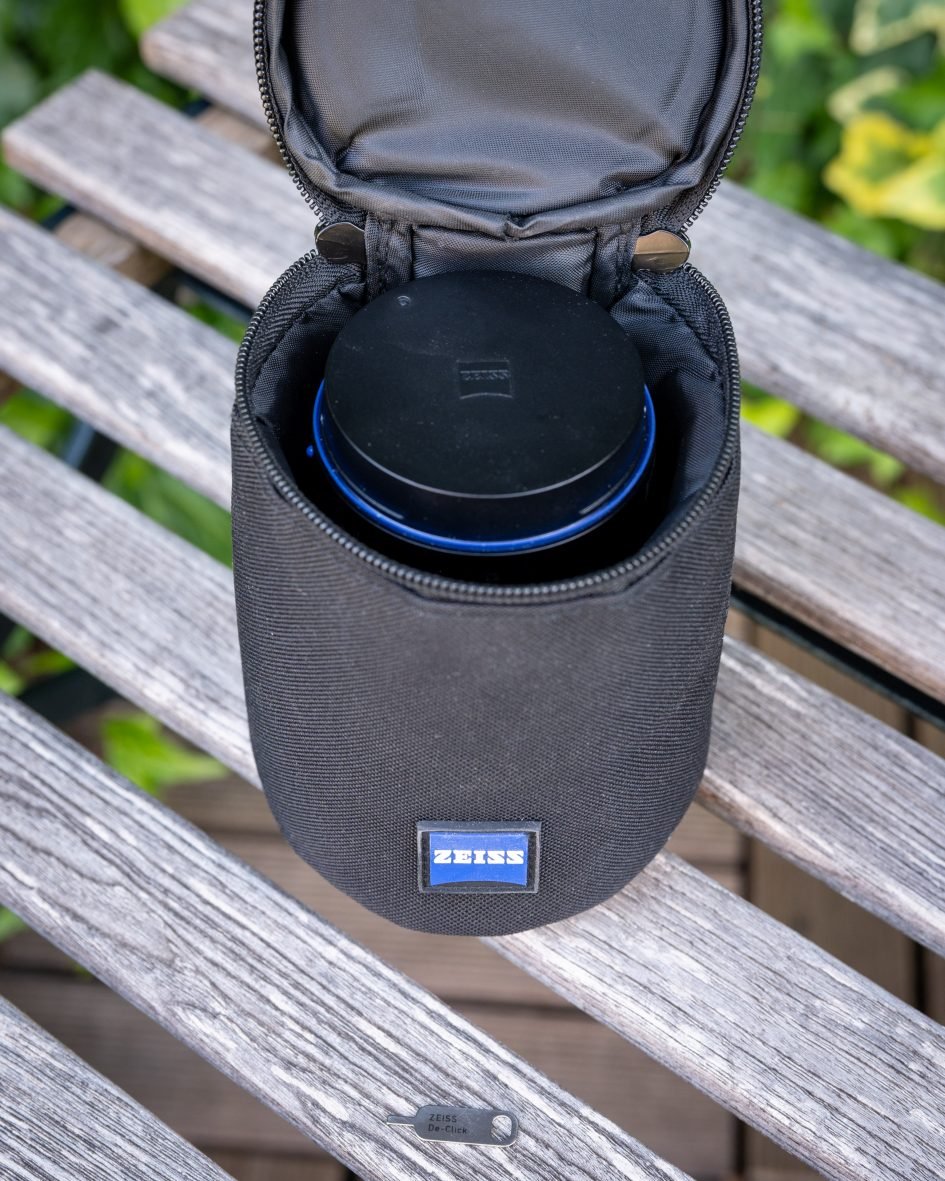
The Zeiss Otus ML 50mm f1.4 comes with a well padded pouch, a small screwdriver to operate the de-clicking switch, and the lens hood is included and reversible for transport. I wish Nikon would deliver their more expensive lenses with a similar quality pouch instead of the usual flimsy cloth which does not even have strings to pull it close. [+]
Sealing: Zeiss improved the sealing of its new ML Otus lenses over their DSLR predecessors. They are now equipped with a rubber grommet at the lens mount and have further weather-sealing throughout the construction just like the Z-Nikkors. The Voigtländer does not have sealing at the mount or inside the lens. [+]
On paper the new Zeiss Otus ML 50mm f1.4 does not score many points at 2[-]/6[0]/6[+]: The lens may be smaller, lighter and cheaper than its predecessor, but compared to other alternatives it is still big, heavy, expensive, and manual focus only. And JPGs or videos straight out of camera are not corrected for vignetting and distortions. On the positive side are full weather sealing, metal build, and the de-clickable aperture ring. This mixed balance of features makes optical performance of the Zeiss Otus ML 50mm f1.4 crucial for determining whether it is a worthy successor to the iconic Otus 55mm f1.4.
Three 50mm lenses with Z-mount
Above: Nikon Z 50mm f1.8 S, Zeiss Otus ML 50mm f1.4, Voigtländer 50mm f2 APO-Lanthar
Focus and Aperture operation
The focus ring is 26mm wide and moves smoothly but needs quite a bit of torque. You better use two fingers to turn it, especially since the metal surface offers less grip than a rubberized one. The very long throw of 260 degrees helps to focus very precisely but is a bane when you have to change focus quickly. The Nikon Z 58mm f0.95 S Noct is similar, while the Voigtländer only turns 135 degrees.
Focus operation of the lens is inaudible from the outside or if you record video with the built-in microphone – unless you hit the infinity or MOD limit. As you pull focus, you’ll notice quite a bit of focus breathing: the image became 11% more magnified when I adjusted focus from infinity to 0.63m. This is very visible when shooting video and much stronger than the predecessor (+5%), only topped by the Voigtländer (+14%). The Z-Nikkors show much less focus breathing of around 1%
Focus accuracy and repeatability is critical to consistently produce sharp shots – especially when you have a manual focus lens. I found the focus indicator on my Nikon Z8 to be pretty sensitive so I tried the same test I normally do with AF-lenses: (manually) focusing 20 shots with defocus away from the camera plus 20 shots with defocus towards the camera with only using the focus indicator and no zooming in. I analyzed the results with Reikan FoCal to evaluate the repeatability (the accuracy of focus on the same subject after repeated focus-acquisition) of my focusing with the Zeiss Otus ML 50mm f1.4: Reikan FoCal measured only 94% consistency influenced by three outliers over a series of 40 shots on the well lit and contrasty focus test target – which is not too bad, but AF-lenses do achieve better results. Naturally the outcome depends on my own capabilities to manually focus – but as I don’t do this often the results may well be indicative for other users. Keep in mind though that a moving target is extremely hard to focus. Eye-detect does work – as it does with Nikon’s own manual focus Z 58mm f0.95 S Noct – while the Voigtländer only get’s face-detection.
The aperture ring is 12mm wide with a textured metal surface. It has 1/3 EV clicks between f1.4 and f11 and a single click to f16. It is easier to turn than the focus ring. In fact so easy that I often inadvertently changed the aperture. I’d rather prefer to have more prominent/stronger clicks to avoid this as you can still de-click the lens if you wish. Operating the aperture ring of the lens is inaudible in de-clicked mode but the clicked mode is clearly audible if you record video with the built-in microphone.
Next check out my quality results!
Check prices on the Zeiss Otus ML 50mm f1.4 at B&H, Adorama, WEX UK or Calumet.de. Buy used gear from MPB. Sell your used gear to MPB. Alternatively get yourself a copy of my In Camera book, an official Cameralabs T-shirt or mug, or treat me to a coffee! Thanks!
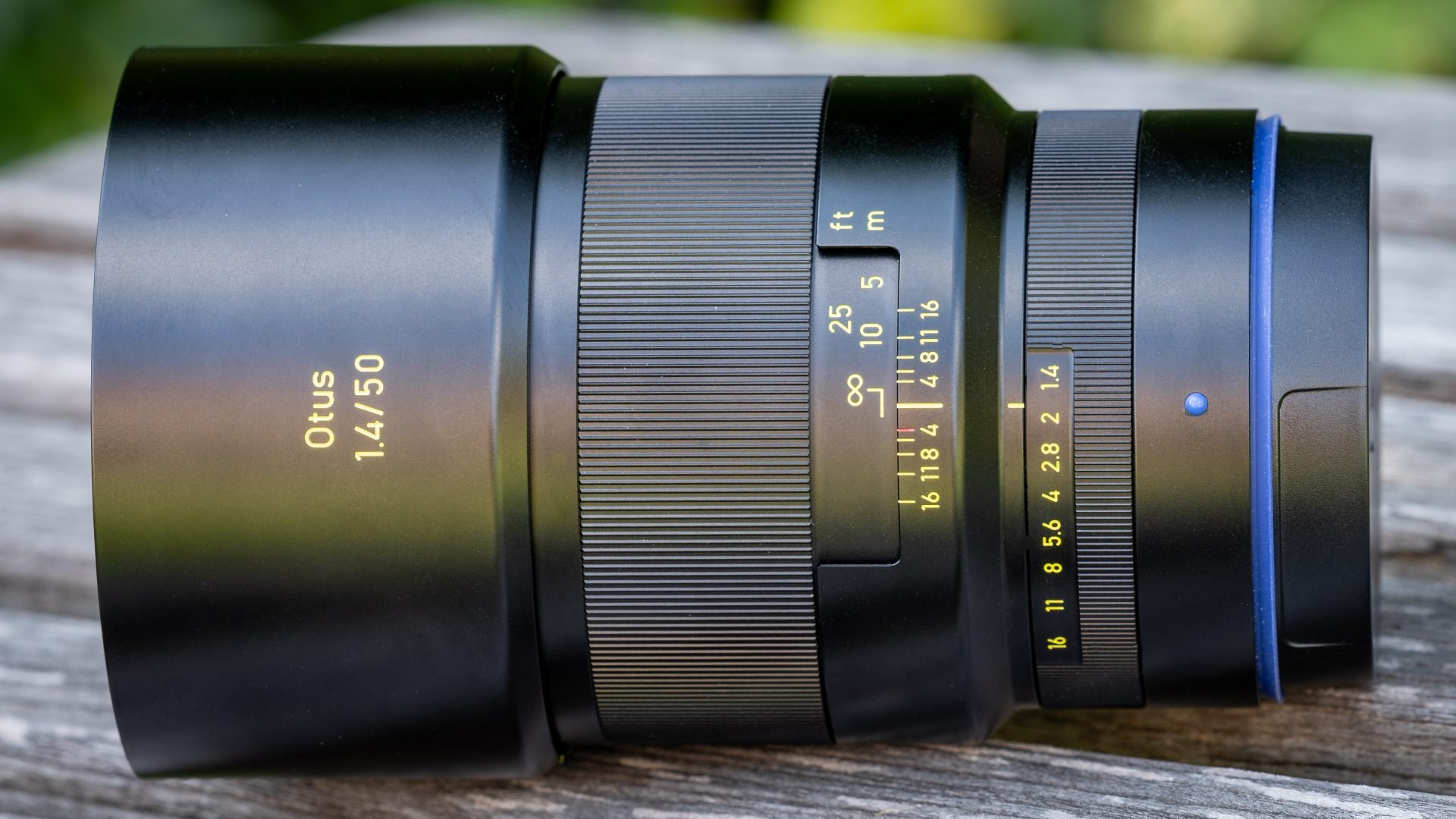
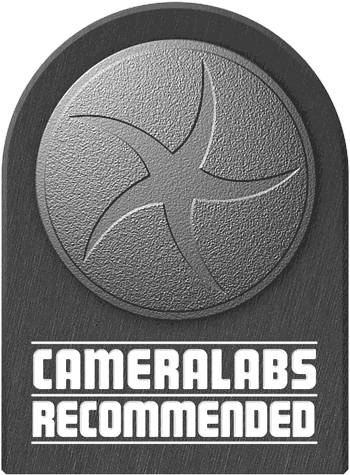 The Zeiss Otus ML 50mm f1.4 is an interesting refresh of their Otus line of iconic prime lenses for DSLRs. It's available in Sony E-mount, Canon RF-mount, and Nikon Z-mount and is manual focus only. Zeiss retained the robust full metal build but managed to make the new lens considerably smaller and lighter, added full weather-sealing, made the aperture ring de-clickable, and reduced the price. Optically the lens disappoints a little with a relatively soft center at f1.4 and noticeable coloured fringing and focus breathing. But it performs surprisingly well in close-up shooting, has very little field-curvature and coma, and well controlled flare, glare, and ghosting. Plus the lens has a good (but not great) Bokeh and supports eye-detect on Nikon Z bodies, which is a boon for portraiture. So although the lens is still pretty expensive and does not quite reach the optical qualities of its predecessor I can still recommend the new Zeiss Otus ML 50mm f1.4.
The Zeiss Otus ML 50mm f1.4 is an interesting refresh of their Otus line of iconic prime lenses for DSLRs. It's available in Sony E-mount, Canon RF-mount, and Nikon Z-mount and is manual focus only. Zeiss retained the robust full metal build but managed to make the new lens considerably smaller and lighter, added full weather-sealing, made the aperture ring de-clickable, and reduced the price. Optically the lens disappoints a little with a relatively soft center at f1.4 and noticeable coloured fringing and focus breathing. But it performs surprisingly well in close-up shooting, has very little field-curvature and coma, and well controlled flare, glare, and ghosting. Plus the lens has a good (but not great) Bokeh and supports eye-detect on Nikon Z bodies, which is a boon for portraiture. So although the lens is still pretty expensive and does not quite reach the optical qualities of its predecessor I can still recommend the new Zeiss Otus ML 50mm f1.4.